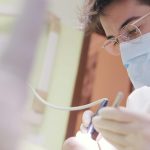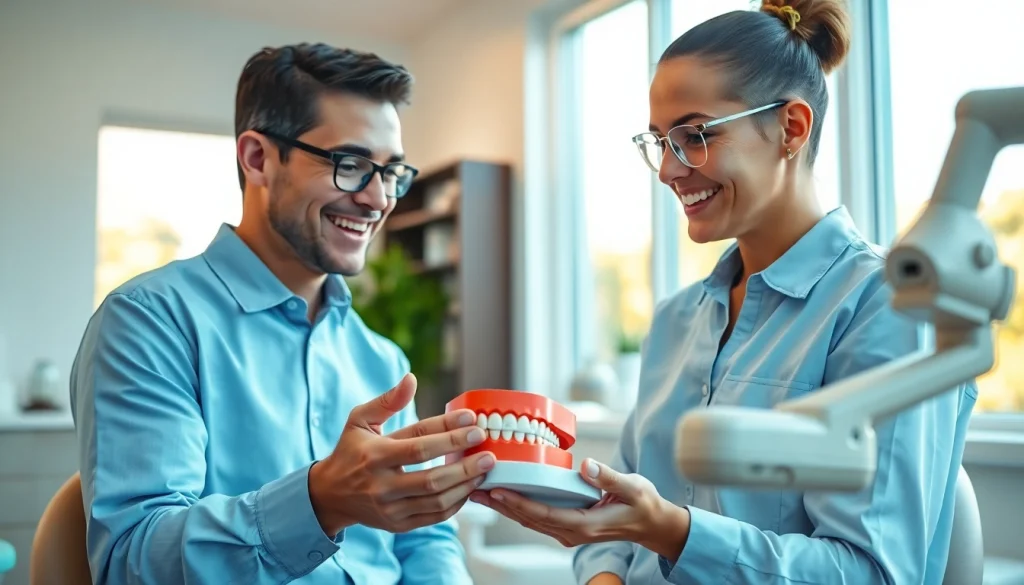Understanding Braces Cost Myrtle Beach
When considering orthodontic treatment, one of the primary concerns for many parents and individuals is understanding the braces cost Myrtle Beach. The quest for a perfect smile often comes with various financial considerations, which can fluctuate significantly based on numerous factors. This article aims to dissect the components that contribute to braces costs, offering insights into budgeting and finding the right orthodontist.
Factors Influencing Braces Cost
Several key factors play a significant role in determining the cost of braces in Myrtle Beach. Understanding these elements can help patients and their families manage expectations regarding total expenses.
Type of Braces
The type of braces selected significantly influences the overall cost. Traditional metal braces are generally the least expensive option, with costs typically ranging from $3,000 to $7,000. These braces are effective and durable, making them a popular choice among orthodontists and patients alike. On the other hand, ceramic braces, while aesthetically pleasing, can be more expensive, often costing between $4,000 and $8,000.
Length of Treatment
The duration of the orthodontic treatment directly impacts pricing. Treatment plans can vary from six months to a few years, depending on the complexity of the case. Longer treatments often lead to higher costs due to additional follow-up visits and appointments required during this period.
Geographical Location
The cost of braces can vary based on the geographical area. In Myrtle Beach, factors such as local demand for orthodontic services, cost of living, and competition among providers can all contribute to price differences. Typically, metropolitan areas may see higher prices for orthodontic treatments compared to suburban or rural settings.
Orthodontist’s Experience
The credentials and experience level of the orthodontist can also affect the cost of braces. Established orthodontists who have a strong reputation and significant experience may charge higher fees due to their expertise and successful track record. However, opting for a skilled professional can lead to better treatment outcomes.
Comparing Traditional and Clear Aligners
While traditional metal braces are a well-known option, invisible aligners, such as Invisalign, have become increasingly popular due to their aesthetic appeal and convenience. This section will compare the costs and benefits of each option.
Traditional Braces
As mentioned previously, traditional braces can cost between $3,000 and $7,000 in Myrtle Beach. They effectively correct a wide range of dental issues, including severe misalignments and bite problems. Traditional braces are attached to the teeth with brackets and wires, making them a permanent fixture until the treatment period is complete.
Clear Aligners
Clear aligners, like Invisalign, range in cost from about $3,500 to $8,000. These aligners are removable, which allows for easier maintenance of oral hygiene and offers greater comfort than traditional braces. However, they may not be suitable for everyone, especially in more complex cases. Moreover, treatment time can be similar to that of traditional braces, but the need for regular monitoring is crucial to ensure proper alignment.
Regional Price Variations
Understanding how prices can vary regionally is essential for accurate budgeting for braces treatment. Different areas might have distinct pricing trends based on local economy, demand for services, and orthodontic capabilities. For instance, in Myrtle Beach, the cost dynamics may reflect its coastal economy and the inflow of new residents, thereby affecting service demand and pricing.
Budgeting for Orthodontic Treatment
Once you’re aware of the factors that will influence the cost of braces, effective budgeting becomes the next step. This section outlines various strategies and options to help manage the financial implications of orthodontic treatment.
Payment Plans and Financing Options
Many orthodontic practices in Myrtle Beach offer flexible payment plans which can help to spread the cost over time. Patients often have the option to pay a portion upfront, followed by monthly installments. Interest-free financing plans may also be available, making orthodontic treatment more accessible. It is advisable to discuss these options during the consultation appointment with the orthodontist.
Insurance Coverage Insights
Insurance can play a critical role in mitigating the overall expense of braces. Many dental insurance plans include coverage for orthodontic treatment, usually offering anywhere from 50% to 80% coverage. However, it’s crucial for patients to verify their insurance policy details regarding coverage limits and requirements. Some plans may have exclusions or waiting periods before orthodontic benefits kick in.
Hidden Costs of Braces
When budgeting for braces, patients should also consider potential hidden costs that may arise throughout the treatment process. These can encompass:
- Emergency Visits: Unforeseen issues such as broken brackets or wires may necessitate emergency visits, incurring additional fees.
- Retainers: Once braces are removed, patients will likely need retainers to maintain tooth position, which involves more costs.
- Additional Treatments: Certain cases may require supplementary treatments such as extractions, or advanced therapies that can add to the original plan.
Finding the Right Orthodontist
Finding a qualified orthodontist is just as important as understanding the costs involved in braces. Selecting the right professional greatly impacts both the experience and outcome of orthodontic treatment.
Evaluating Qualifications and Experience
When searching for an orthodontist, prospective clients should evaluate their qualifications, including education, training, and certifications. It’s essential to look for someone who is board-certified, as this indicates a higher standard of expertise. Additionally, seeking recommendations from friends, family, or dental professionals can help narrow down the best options available in Myrtle Beach.
Consultation Expectations
The initial consultation is a vital opportunity for patients to assess whether an orthodontist is the right fit. During this meeting, patients should not only ask about treatment options and costs but also inquire about the technology used, the treatment planning process, and the expected duration of treatment. A thorough consultation enhances understanding and fosters trust between the patient and orthodontist.
Patient Reviews and Testimonials
Reading reviews and testimonials from previous patients provides valuable insights into an orthodontist’s practice. Many dental websites and social media platforms offer patient feedback which can aid in measuring satisfaction and results. Inquiring specifically about treatment outcomes, office environment, and financing transparency can provide a clearer picture of what to expect.
Maximizing Treatment Value
Understanding treatment options and best practices can help maximize the value of orthodontic treatment. The following sections outline how to make the most of the investment in braces.
Choosing the Best Type of Braces for You
Selecting the best type of braces for individual needs depends on various factors such as aesthetics, treatment goals, and lifestyle preferences. Those concerned about appearance may lean towards clear aligners or ceramic braces. Consideration of the degree of correction required should also influence the decision, as traditional braces may be necessary for more complicated cases.
Importance of Follow-Up Visits
Regular follow-up visits are critical for the success of braces treatment. These appointments allow the orthodontist to monitor progress, make adjustments, and deal with any emerging issues. Ensuring compliance with scheduled visits can significantly impact the treatment duration and overall effectiveness.
Maintaining Oral Hygiene During Treatment
Proper oral hygiene practices are essential when undergoing orthodontic treatment. Braces can trap food and plaque, potentially leading to cavities or gum disease if not managed adequately. Patients should follow a strict cleaning routine, including brushing after meals, using specialized cleaning tools, and making regular visits to their dentist for professional cleanings.
Long-Term Impact of Investing in Braces
Investing in braces provides far-reaching implications for both oral health and self-esteem. Understanding these long-term benefits is crucial for appreciating the value of orthodontic treatment.
Benefits of a Healthy Smile
Pursuing orthodontic treatment offers significant benefits, including improved oral functions, aesthetic advantages, and enhanced self-confidence. A healthy smile not only looks good but also contributes to better oral hygiene and overall health. Properly aligned teeth can help reduce the risk of dental issues that may arise from misalignment.
Expected Changes Post-Treatment
Once braces are removed, patients can expect to see immediate results, often followed by a period of adjustment as they adapt to their newly straightened teeth. Long-term commitment to oral hygiene and wearing retainers is crucial for maintaining the desired outcome. Many patients experience a boost in self-esteem and satisfaction with their appearance.
Continued Care and Retainers
Continued care post-treatment is essential for preserving the benefits achieved through braces. Retainers, custom-fitted devices designed to hold teeth in their new position, are typically worn immediately after braces and then transitioned to nighttime use. Understanding the importance of diligent retainer use can aid in preventing relapse of misalignment.





